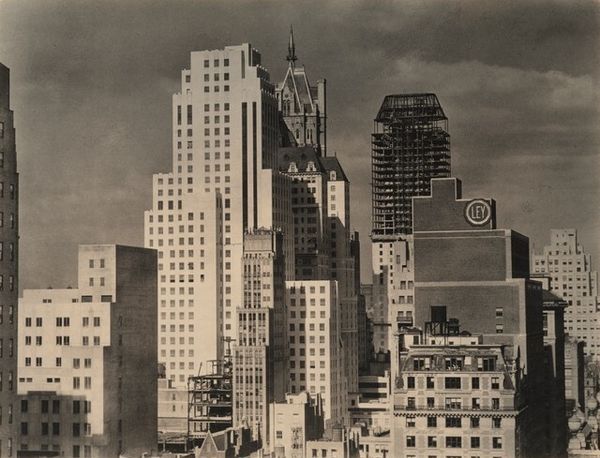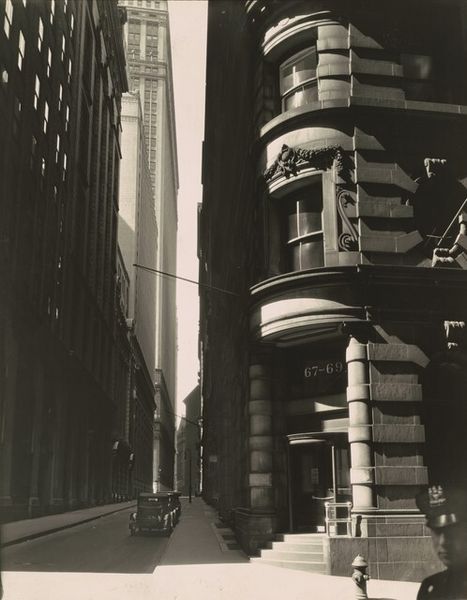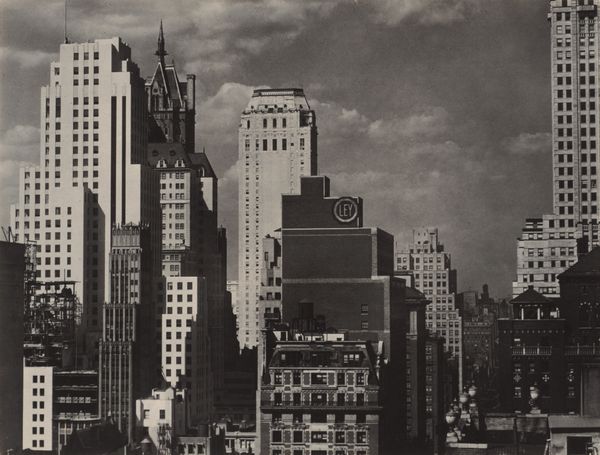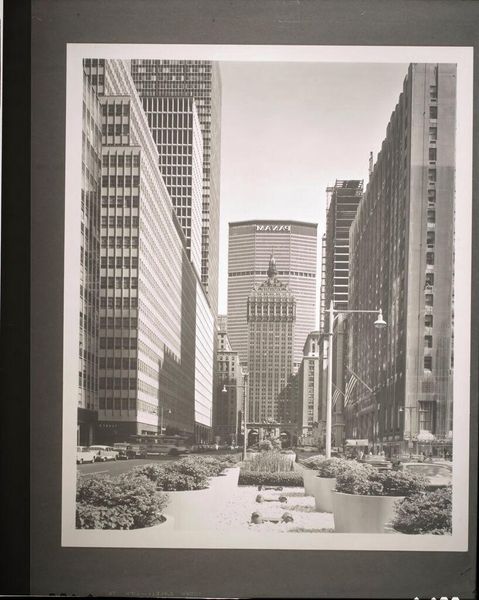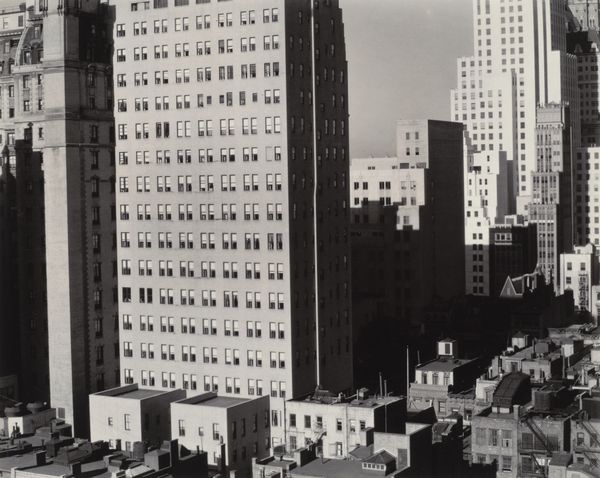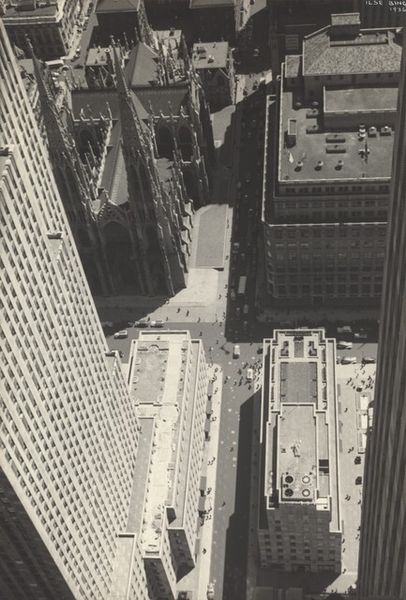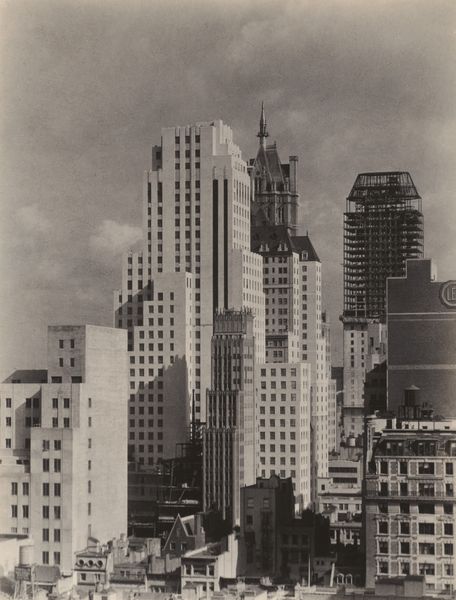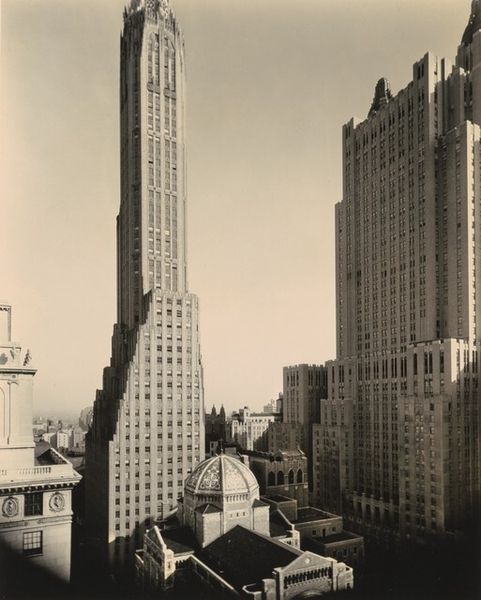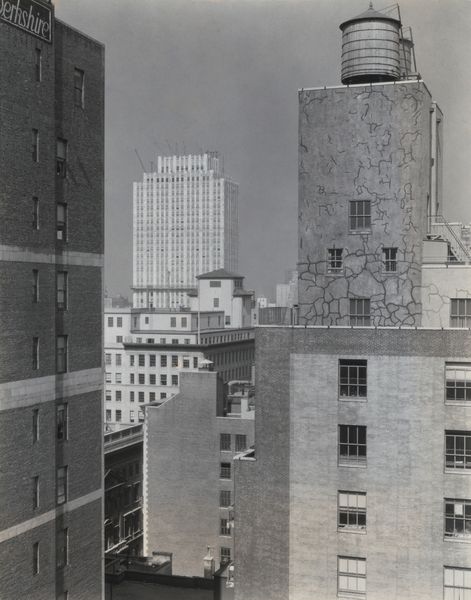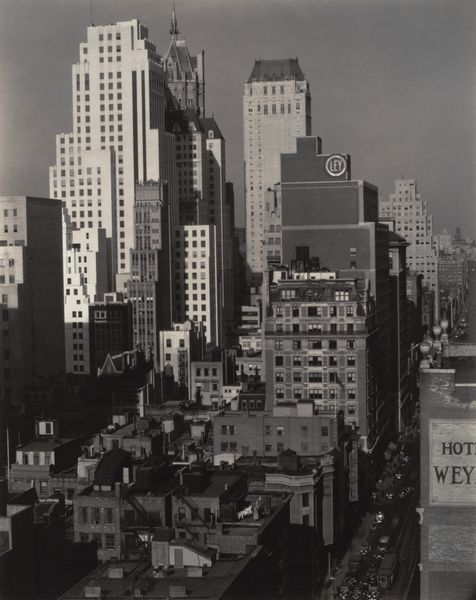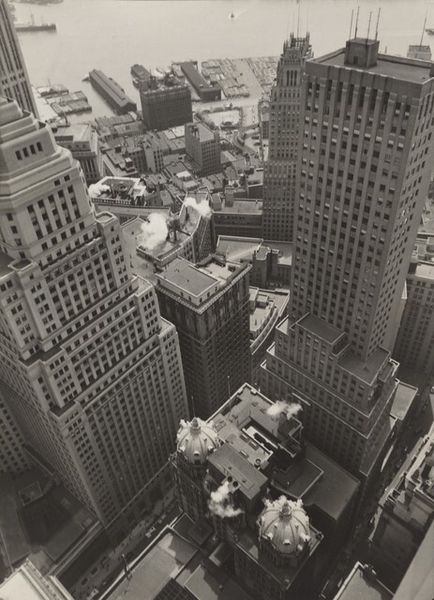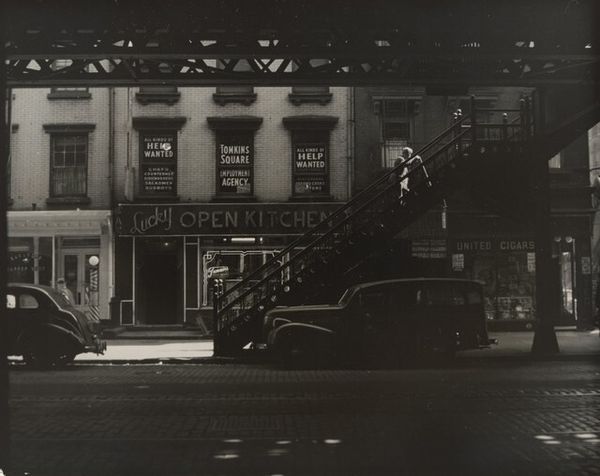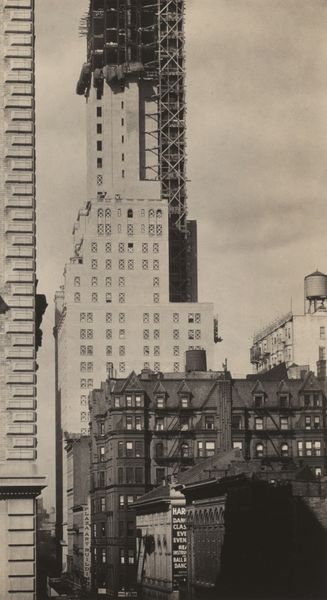
photography
#
street shot
#
urban cityscape
#
street-photography
#
photography
#
geometric
#
urban life
#
street photography
#
cityscape
Dimensions: image: 20.4 × 30 cm (8 1/16 × 11 13/16 in.) sheet: 30.3 × 40.3 cm (11 15/16 × 15 7/8 in.)
Copyright: National Gallery of Art: CC0 1.0
Art Historian: Editor: Here we have William Klein’s “First Avenue,” potentially created between 1955 and 1978. It’s a black and white photograph filled with a chaotic yet captivating array of signage and city architecture. It feels almost aggressively urban, capturing the overwhelming nature of city life. How do you interpret this work? Art Historian: As a materialist, what immediately grabs my attention are the layers of text and imagery dominating the frame. Consider these signs not just as visual noise, but as indicators of economic exchange and public messaging. What can these mass-produced signs tell us about the cultural values of the time? Do you think the density contributes to the commodification of experience itself? Editor: I see what you mean. It’s like Klein is showing us how the city bombards us with messages trying to sell us something, constantly. It makes me feel a bit overwhelmed. The buildings themselves almost become a backdrop to this relentless commercialism. Art Historian: Exactly! Notice the materiality of these signs – the worn surfaces, the slightly decaying paint. This speaks volumes about the production and consumption cycles within urban spaces. Also consider the contrast between the temporary nature of the signs and the implied permanence of architecture. Editor: That makes so much sense. I guess I was just focused on the visual busyness of it all. Art Historian: Look beyond just the visual. Consider the labor involved in making and placing these signs, and how the photograph itself freezes this dynamic. Do you see any political message reflected in these commercial displays? What assumptions about his audience, the people circulating these signs? Editor: It hadn't occurred to me. It does feel like Klein captured a particular historical moment, a time when those types of advertising and urban density were just taking hold. Thank you for sharing! Art Historian: It’s about considering the entire material and economic ecosystem that generates an image like this. These images serve as archives, if only we know how to read them.
Comments
No comments
Be the first to comment and join the conversation on the ultimate creative platform.
